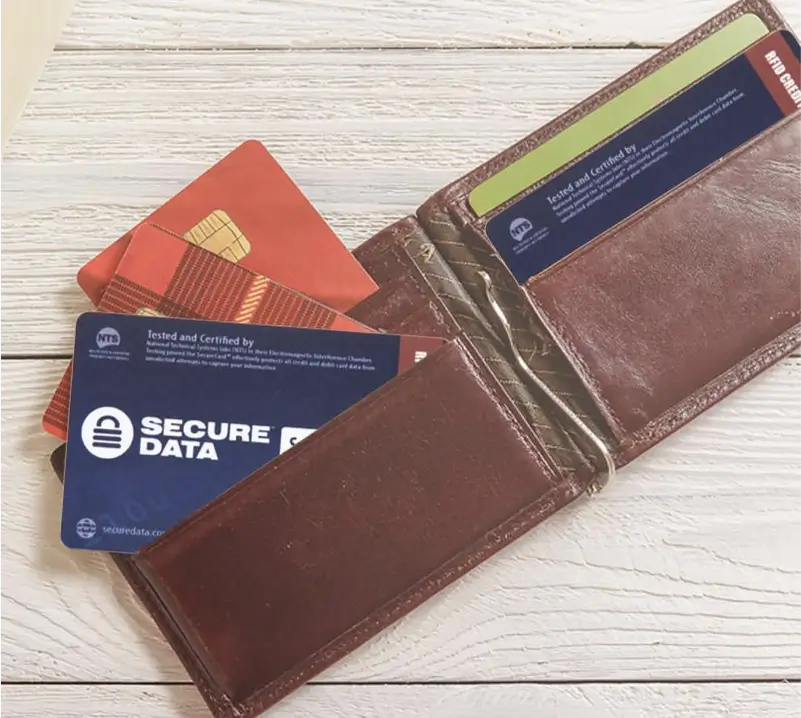We all know the term "hacker." It's baked into the public consciousness thanks to big-budget movies and TV showing a guy with super-fast fingers clicking his way into the mainframe of some big bank. The numbers, all those zeroes, and ones, fly across the screen, and he's a millionaire within minutes. He slams his laptop shut while the commas and dollar signs enter into an offshore bank account. He zooms off on the back of a Honda Super Sport into the night. Dramatic music ensures.
The only problem is that that's the stuff of Hollywood plots, not real life. In 2024, financial hacking doesn't have to be as dramatic. Instead, people worldwide have machines that can steal your bank info by RFID skimming – by walking past you on a busy street or, in some cases, standing on the other side of the street.
Your bank account can be zapped for a few hundred dollars within moments, thanks to card readers that aren't much bigger than an iPhone. Skimming has become familiar enough that The Federal Trade Commission (FTC) reported that credit card fraud (including skimming) resulted in over $8 billion in losses in 2020.
We've probably got your attention now.
What is RFID?
RFID stands for Radio Frequency Identification, which uses radio waves to read and capture information stored on a device. RFID skimming works when someone comes near you with an RFID scanner and "skim" the information off your RFID microchip. (Every credit and debit card has this chip. They're also found on passports, too.) RFID skimming is a relatively low-tech but effective method of stealing personal information, and taking preventative measures helps protect against this type of digital theft because it happens every day.
CAN RFID BE HACKED?
Yes, very much so. RFID readers with booster technology can get your information across the street, while others need to be close. It just depends on the machine's power. But this means your data is at risk from anywhere busy with people, like a market, the airport, or a concert. A study by FICO showed a 77% increase in card skimming and crowd-hacking incidents by the end of last year.
How RFID Skimming Works:
- Proximity Reading: Imagine your RFID chip sending out a friendly "hello" when it gets close to one of these machines. With their sneaky handheld readers, Skimmers intercept this greeting from a short distance without you even knowing.
- Data Capture: The skimming device says, "thanks for the data!" and grabs the info from your RFID chip. They skip into the unknown while you're down a few hundred bucks.
- Exploitation: Armed with your info, the thief can shop with unauthorized transactions, create cloned cards, or commit identity theft. Meanwhile, you're left scratching your head and wondering where your money went. (According to Javelin Strategy & Research, it takes an average of 98 days for a consumer to detect unauthorized transactions on their credit or debit cards.)
Choosing the Best RFID Blocking Technology
When it comes to RFID blocking, there are two main types:
- Passive Blockers: The Silent Shield
Think of passive RFID blockers as a strong shield. They absorb or reflect incoming RFID signals, keeping your card information private—a force field for your wallet. - Active Blockers: The Signal Scramblers
These have embedded microchips that actively scramble and jam incoming RFID signals.
Adrian Kingsley-Hughes from ZDNet put these RFID blockers to the test. His data showed why this may not be a daily nuisance plaguing the streets; it's an easy preventive measure just in case and is cost-effective. A survey conducted by AARP 2018 found that 69% of Americans were aware of RFID technology and its potential risks, but only 18% used RFID-blocking products.
Think of it this way: If your cards get skimmed and defrauded, you're usually only covered for reimbursement if you catch it within 60 days. Miss that window, and your financial institution isn't required to refund you. Reporting fraud takes time, and those funds could be on hold while your bank investigates. Considering six in ten Americans don't have an extra $500 for emergencies, having your money on lockdown can be a significant stressor. To add to that thought, most people don't carry cash these days; we all live by the card. So, if someone gets the info, that's a big loss. This is why we created the SecureCard.
So, what is the SecureCard?
Remember all that stuff we said about shields? That's precisely what the SecureCard is. You slip it into your wallet, and that's it. Slide it before your credit and debit cards, and you're safe. Our RFID/NFC blocking card has undergone serious testing and holds the NTS Certificate PR053811-ACT1005612. All your contactless cards within a 10mm range are safe from potential skimmers. So, if you're walking through the streets of New York or London, you're safe. Now, when it comes to spending on a hotel and a slice of pizza, that's between you and your bank. When it comes to RFID, we've got you covered.












